Nail extension technology on forms
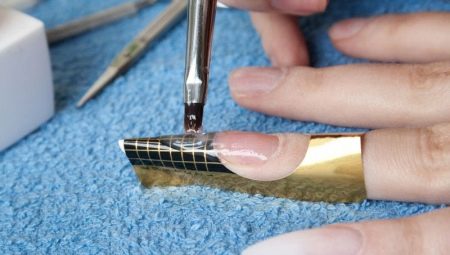
Every lady would like to look well-groomed and perfect, literally to the tips of her nails. Unfortunately, in many women, they are far from always distinguished by their strength and beautiful natural shape, but the current situation can be corrected with the help of building.
Currently, two techniques are used - on tips and on forms, but only the latter allows you to create really beautiful marigolds that cannot be distinguished from real ones.
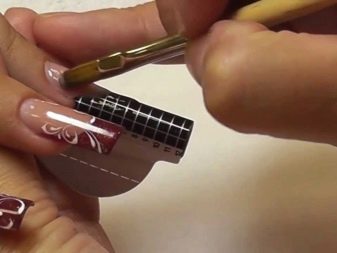
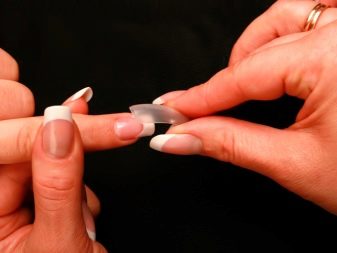
Method characteristic
The molds are small substrates with a hole in which the nail is placed. A special gel is applied to it, which creates an additional length of the natural plate. For convenience, graph paper is drawn on the substrate, thanks to which you can select the optimal parameters. After the end of the building process, the form itself is removed, and thin nails remain.
Forms can be disposable or reusable. The former are also called soft, since they are made either from paper or from bendable plastic and are used only once. They are suitable for nails of any shape, but they can slightly change during the procedure, that is, wrinkle. Reusable molds are made of metal or hard plastic. Such substrates are much more expensive, but they allow you not to be puzzled by buying new ones for a long time.
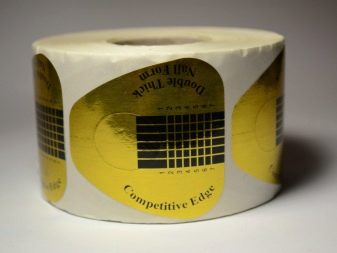
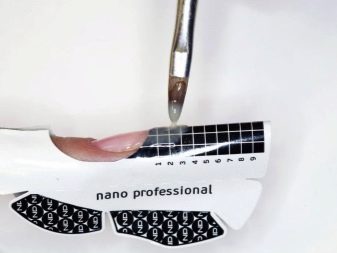
The reusable shape guarantees a more reliable extension procedure without deformations and gaps. The only thing, at the very beginning of work, you will need to choose a substrate that ideally matches the natural shape of the marigold.
Thanks to the use of forms, it is possible to obtain square, oval, round or pointed nails that look as natural as possible. The technique allows you to make an almost imperceptible transition between the plate itself and its continuation, as well as eliminate unnatural excessive thickening.
By the way, experts today use two modeling methods: upper and lower. In the first case, the gel is applied to the template, and then it is attached to the nail itself. In the second case, the template is first fixed under the nail tip, and the material is spread over the top.
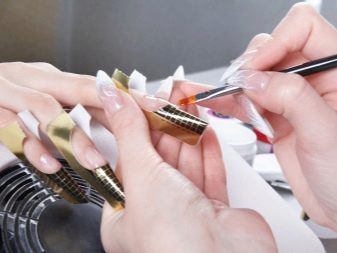
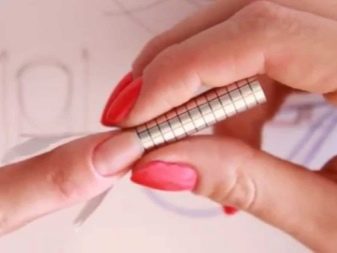
Advantages and disadvantages
Many women prefer building with just such a gel, since the process itself lasts for a relatively short time - about one hundred and twenty minutes, and the nails turn out to be natural and strong. The necessary correction will last at least thirty minutes, but the elastic structure of the plate guarantees a fairly long service life. It is important to mention that the cost of this type of extension is much cheaper than the use of other materials. If we talk about tips and shapes, then with shapes the nails turn out much more natural, but working with tips is easier.
Other advantages of this type of extension include obtaining a beautiful glossy shine., the ability to align the nail plate, protection from dryness and surface damage. The composition of the gel used does not cause allergies, on the contrary, it prevents the development of the fungus.
Finally, it is easy to create a variety of designs on nails extended in this way, requiring the use of numerous techniques.
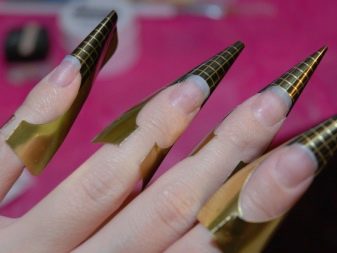
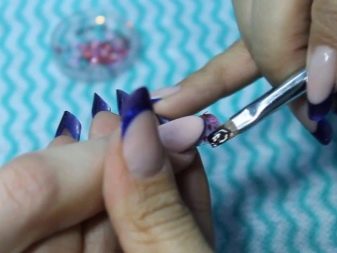
If we talk about the minuses, then there may be unpleasant sensations during work, as well as unexpected metamorphoses with marigolds due to temperature changes.
Gel polish cannot be removed or repaired on its own, therefore, in both cases, you will have to contact a specialist. By the way, in case of a nail breakage, you will have to build it up again.
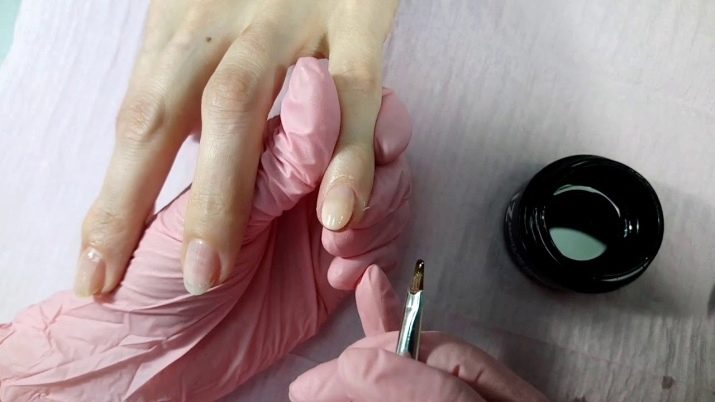
Required tools and materials
To grow nails on forms with gel, you will need a number of specific items. To treat the cuticle, a pusher or a wooden orange stick is used, as well as an express remover or a bath. Just in case, you will need to prepare an antiseptic to avoid the appearance of fungus - for example, rubbing alcohol, chlorhexidine or a special manicure. As always, nail scissors, tweezers, files and buffs will come in handy. A brush for removing nail dust is considered optional, but recommended.
The dehydrator will degrease the nail plate and remove the sticky layer of gel polish, and the primer will provide better contact between the nail itself and other materials. Of course, you can't do without a base, top and colored gel polishes. To complete the main task, that is, to build up a nail, you will need a modeling gel, suitable brushes, and also shapes. Finally, the process of manicure with extensions is impossible without a UF lamp, since an LED device will not work in this case. You should also stock up on lint-free wipes for easy application of the dehydrator.
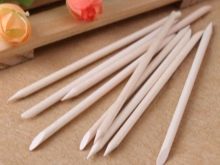
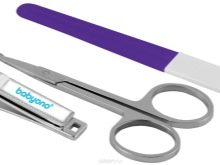
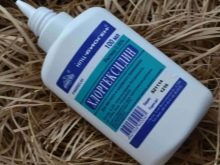
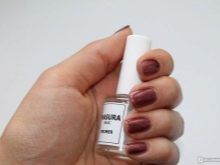

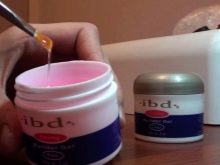
Shape selection
For those who want to carry out this procedure, there is an opportunity to choose the most suitable form of extended nails. In addition to the above soft disposable and hard reusable, there are several other types. The versatile square shapes are suitable for both long and short nails.
They are comfortable to "wear" and also look simple but dignified. "Pipe", "stiletto" and "age" have rather unconventional shapes and sharp tips, therefore they are used exclusively on long nails.
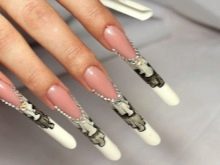

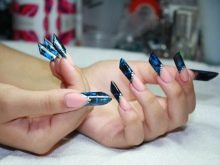
"Oval" and "almond" look graceful and neat, so oval patterns are suitable for all nails.
They are characterized by parallel lateral lines and rounded tips. Visually, oval patterns lengthen short nails, and wide ones make them miniature.Round shapes are usually used for short nails. The "ballerina" pattern is a kind of transitional option from a square to a triangle and is considered to be very trendy. Some people compare the shape of the nails with the ballerina's pointe shoes, which is where the name comes from.
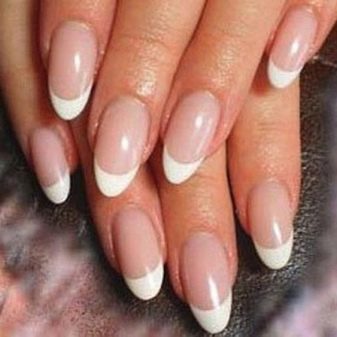

Preliminary preparation
Even before the start of building, both the nails and the fingers themselves must be treated with an antiseptic substance. Then the usual hygienic manicure is carried out: the cuticle is trimmed or pushed back with an orange stick, and the pterygium is removed. The free edge of the nail is filed, and the entire surface is sanded with a buff. It is important that the nail has a free edge equal to 0.5 millimeters, to which the substrate will be fixed.
All excess dust that has appeared is shaken off with a brush. With the help of a dehydrator and lint-free wipes, the nail is degreased, after which a primer is immediately applied to the surface. Once it is dry, the plate will have to be covered with a thin layer of base, which is then dried for two to three minutes in a UF lamp.
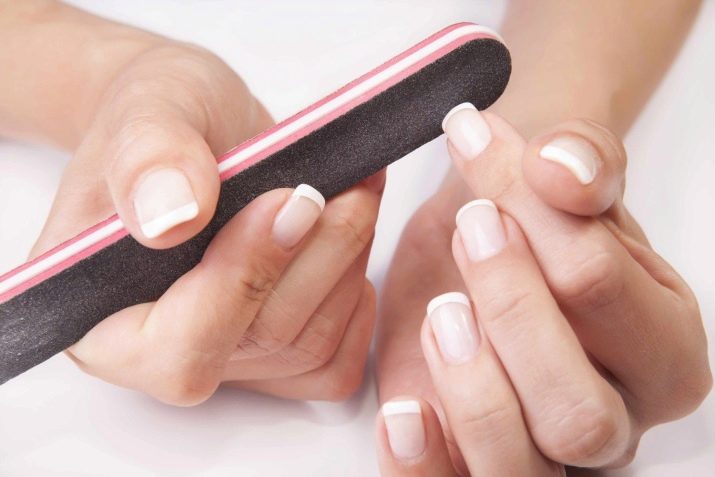
Step-by-step instruction
Direct nail extension begins with the placement of the mold on the nail. It is worth putting it on carefully and using step-by-step instructions, otherwise all further steps will not make any sense. It is usually much easier to put a reusable solid form, because it is enough just to pick it up to the size of the nail itself and fix it tightly. In the case when a disposable form is used, then first it will be necessary to "cut out" a hole in it, ideally suited to the size of the subungual arch. If the technology is violated, unnecessary gaps will appear, where the gel will flow over time.
Once the shape is fixed, it will be important to create nice curves at the sides and end. Otherwise, you can get "nails-beaks" or resembling a springboard. The extension of nails is done first on four fingers of one hand, then on four fingers of the other hand, and finally on the thumbs. This is recommended to prevent the gel from dripping from the thumbs onto the other. By the way, if disposable forms are inconveniently soft, then you can glue them in pairs for greater stability.
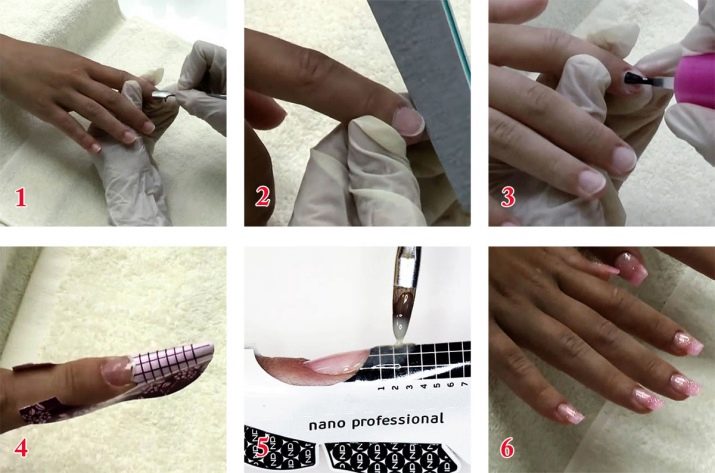
With the help of a modeling gel in accordance with the markings, the build-up is carried out. The cuticle area is covered with a thin layer of substance, the thickness of which increases towards the stress area, consisting of the remaining two-thirds of the marigold and one-third of the shape itself.
In the stress zone, the gel is applied as thickly and thickly as possible. Finally, the free edge of the plate is also formed with a thin layer. The extended marigold is dried from two to three minutes in a special lamp.
Completing this process, it is necessary to remove the sticky layer and form. To make the plate even, it is also recommended to grind it, and also file it if necessary. At this stage, you can already paint your nails with colored varnish, which, as a rule, is applied in two or three layers, each of them must be dried in a special device. If necessary, the marigolds are decorated in some way, and then covered with a fixing top and must be dried twice as long as the previous layers were dried. Sticky excess is removed again, and the cuticle is coated with a special oil.
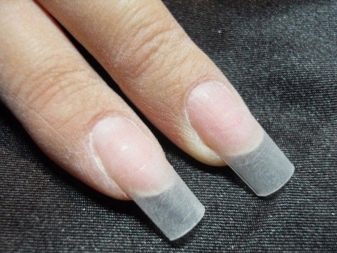
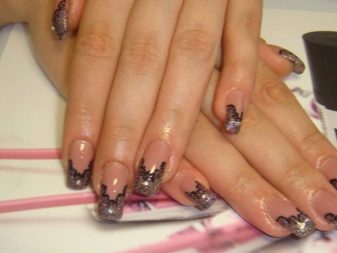
Care features
It is important to remember that you can remove extended nails with a special device. An exception may be only biogel, which is soaked and thereby prevents damage to the natural nail plate.
It is allowed to take care of helium nails only with products that do not contain aggressive ingredients, but contain healing nourishing oils. Also, you should not allow temperature changes and try to adjust the shape yourself.Experts advise to regularly moisturize the cuticle, use a cream, be gentle and regularly clean the space under the nail itself. Correction, as a rule, is carried out once a month.
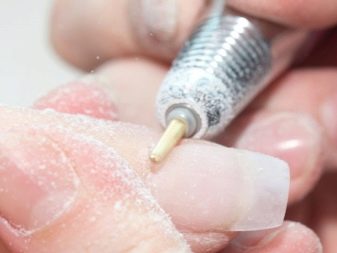
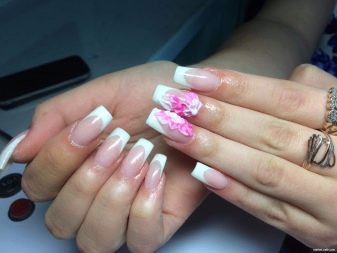
Tips from the masters
The work will be much faster, easier and more effective if you properly prepare the place where everything will take place.
You need to build up your nails on a flat horizontal surface, for example, on a desk, next to which, for convenience, there is a socket for connecting a lamp.
The light source must be artificial, because ultraviolet light negatively affects the state of the gel. In addition, it is believed that the building process is very complex and long-term, so it should be divided into two parts: first, a hygienic manicure is done, and after a day or two - direct building from the right hand to the left.

Step-by-step instructions with illustrative examples of nail extension on forms are presented in the video below.








